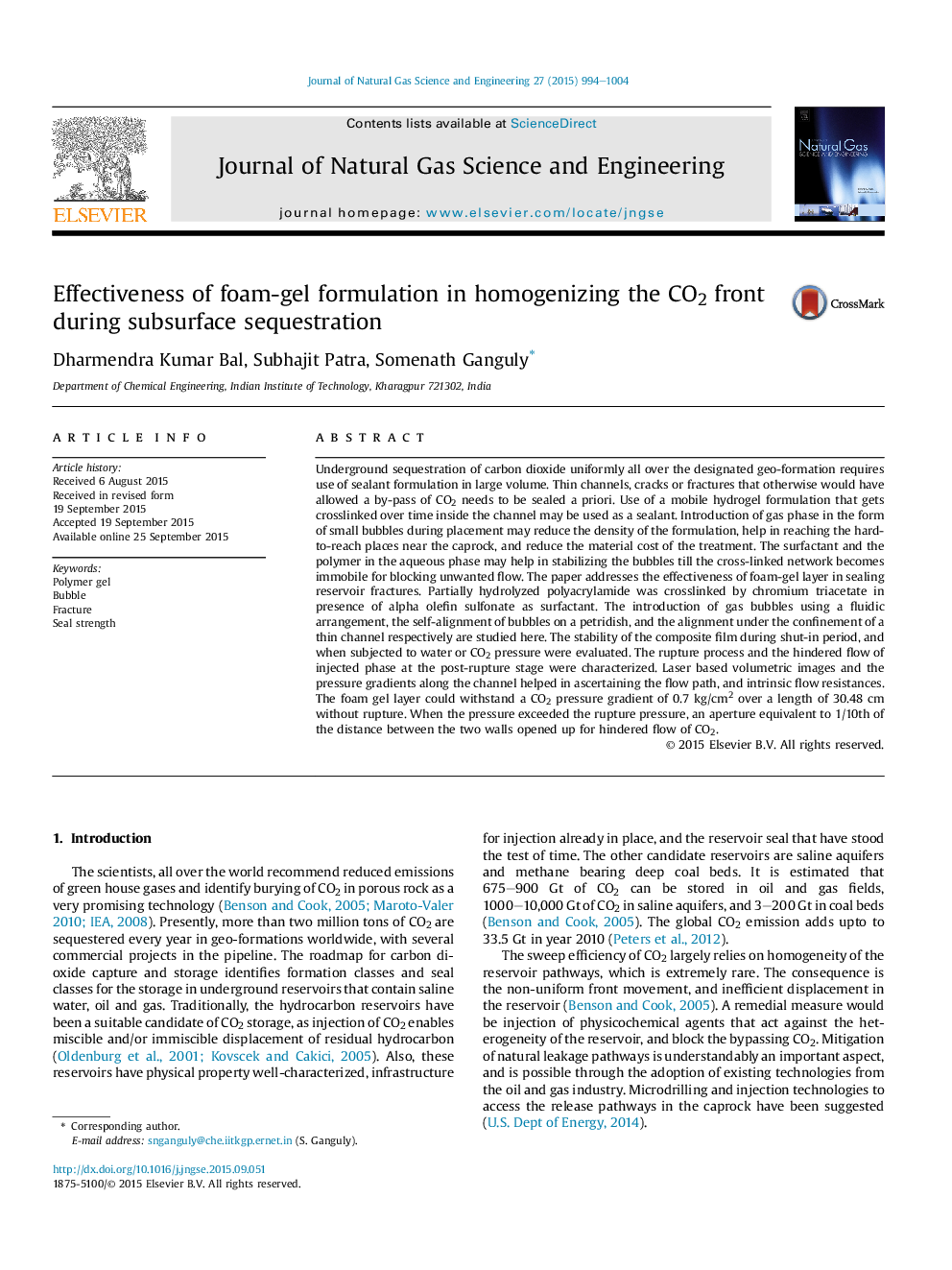| کد مقاله | کد نشریه | سال انتشار | مقاله انگلیسی | نسخه تمام متن |
|---|---|---|---|---|
| 1757647 | 1019129 | 2015 | 11 صفحه PDF | دانلود رایگان |
عنوان انگلیسی مقاله ISI
Effectiveness of foam-gel formulation in homogenizing the CO2 front during subsurface sequestration
دانلود مقاله + سفارش ترجمه
دانلود مقاله ISI انگلیسی
رایگان برای ایرانیان
موضوعات مرتبط
مهندسی و علوم پایه
علوم زمین و سیارات
علوم زمین و سیاره ای (عمومی)
پیش نمایش صفحه اول مقاله

چکیده انگلیسی
Underground sequestration of carbon dioxide uniformly all over the designated geo-formation requires use of sealant formulation in large volume. Thin channels, cracks or fractures that otherwise would have allowed a by-pass of CO2 needs to be sealed a priori. Use of a mobile hydrogel formulation that gets crosslinked over time inside the channel may be used as a sealant. Introduction of gas phase in the form of small bubbles during placement may reduce the density of the formulation, help in reaching the hard-to-reach places near the caprock, and reduce the material cost of the treatment. The surfactant and the polymer in the aqueous phase may help in stabilizing the bubbles till the cross-linked network becomes immobile for blocking unwanted flow. The paper addresses the effectiveness of foam-gel layer in sealing reservoir fractures. Partially hydrolyzed polyacrylamide was crosslinked by chromium triacetate in presence of alpha olefin sulfonate as surfactant. The introduction of gas bubbles using a fluidic arrangement, the self-alignment of bubbles on a petridish, and the alignment under the confinement of a thin channel respectively are studied here. The stability of the composite film during shut-in period, and when subjected to water or CO2 pressure were evaluated. The rupture process and the hindered flow of injected phase at the post-rupture stage were characterized. Laser based volumetric images and the pressure gradients along the channel helped in ascertaining the flow path, and intrinsic flow resistances. The foam gel layer could withstand a CO2 pressure gradient of 0.7Â kg/cm2 over a length of 30.48Â cm without rupture. When the pressure exceeded the rupture pressure, an aperture equivalent to 1/10th of the distance between the two walls opened up for hindered flow of CO2.
ناشر
Database: Elsevier - ScienceDirect (ساینس دایرکت)
Journal: Journal of Natural Gas Science and Engineering - Volume 27, Part 2, November 2015, Pages 994-1004
Journal: Journal of Natural Gas Science and Engineering - Volume 27, Part 2, November 2015, Pages 994-1004
نویسندگان
Dharmendra Kumar Bal, Subhajit Patra, Somenath Ganguly,